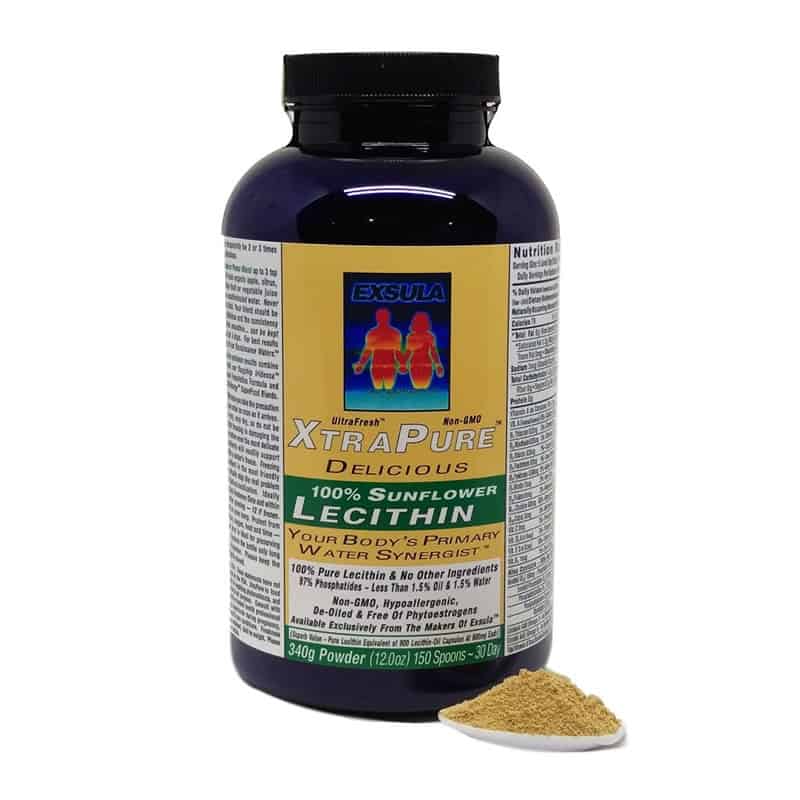No products in the cart.
Health Dangers from Trans Fats
Mary G. Enig, Ph.D., a nutritionist widely known for her research on the nutritional aspects of fats and oils, is a consultant, clinician, and the Director of the Nutritional Sciences Division of Enig Associates, Inc., Silver Spring, Maryland. She received her PhD in Nutritional Sciences from the University of Maryland, College Park in 1984, taught a graduate course in nutrient-drug interactions for the University’s Graduate Program in Nutritional Sciences, and held a Faculty Research Associateship from 1984 through 1991 with the Lipids Research Group in the Department of Chemistry and Biochemistry.
Dr. Enig is a Fellow of the American College of Nutrition, and a member of the American Institute of Nutrition. Her many years of experience as a “bench chemist” in the analysis of food fats and oils, provides a foundation for her active roles in food labeling and composition issues at the federal and state levels. Dr. Enig is a Consulting Editor to the “Journal of the American College of Nutrition” and formerly served as a Contributing Editor to “Clinical Nutrition.” She has published 14 scientific papers on the subject of food fats and oils, several chapters on nutrition for books, and presented over 35 scientific papers on food and nutrition topics.
She is the President of the Maryland Nutritionists Association, past President of the Coalition of Nutritionists of Maryland and was appointed by the Governor in 1986 to the Maryland State Advisory Council on Nutrition and served as the Chairman of the Health Subcommittee until the Council was disbanded in 1988. I first learned of Dr. Mary Enig’s research from a 1978 report in the Federation Proceedings. We met shortly after that, and since I had written about trans fats several times in Supernutrition, we had common concerns about the effect that these trans fats from processed foods were having. We were both concerned particularly about the misconception that processed margarine was better than natural butter.
In several visits by Dr. Mary Enig to the Solgar Nutritional Research Center I quickly learned that she was an exacting scientist who is not afraid to speak out and who supports good nutrition, not just going along with the establishment’s party line. While studying for her Ph.D. at the University of Maryland, often she would first respond with the “correct” answer that was expected, and then she would explain why new research indicated “alternatives,” such as optimal vitamin and mineral nourishment, provided a better answer. It is not easy be credentialed by the “system,” while your own research shows other facts.
In her 1978 report, Dr. Enig challenged the speculation concerning the relationship of dietary fat and cancer causation. She concluded that correlations between the increase in per capita dietary fat intake and total cancer mortality over a sixty-year period show significant positive correlations for total fat and vegetable fat, and negative correlation for animal fat. That the cancer rate is higher when the amount of vegetable fat or total fat is higher in the diet, but the cancer rate is lower when there is more animal fat in the diet. These findings were unpopular then as they are today, but they are still correct. It is convenient to blame everything on red meat and animal fat, and believe that vegetable oil is the great dietary salvation – even if it is partially hydrogenated. At least that is what the vegetable oil people would like everyone to believe.
Now, we are not saying that lots of dietary fat is good for you and that vegetables are not good. Eating vegetables, fruits and other whole foods is very desirable. However, that is not the same as eating partially-hydrogenated vegetable oils. Americans eat too much fat (especially partially hydrogenated vegetable oils) and not enough fruits and vegetables. The problem is that the typical American is not eating enough whole foods, but instead, is eating too much partially-hydrogenated vegetable oil – a fractionated food – that has been made into “funny foods” such as margarine or added to baked goods. Such “funny foods” are much different than real whole foods.
Hydrogenation ruins the nutritional value of vegetable oils! Why would anyone want to ruin the nutritional value of vegetable oils? The purpose of hydrogenation is to solidify an oil so that it can be made to resemble real foods such as butter. The hydrogenation process imparts desirable features such as spreadability, texture, “mouth feel,” and increased shelf life to naturally liquid vegetable oils. In the hydrogenation process, vegetable oil is reacted under pressure with hydrogen gas at 250 – 400oF for several hours in the presence of a catalyst such as nickel or platinum. However, this industrial process cannot control where the hydrogen atoms are added to the “unsaturated” double bonds.
Randomly adding hydrogen atoms to polyunsaturated fats converts natural food components into many compounds, some of which have never been seen before by man until partially hydrogenated fats were manufactured. Some of the several dozens of altered compounds created in the manufacture of partially-hydrogenated fats are “trans” fatty acids. Fatty acids are the building blocks of fats, much like amino acids are the building blocks of proteins. Other new compounds accidentally synthesized include fatty acids having double bonds trans-located to new and unnatural positions, and various molecular fragments. Many of these altered compounds are detrimental to health.
Since “trans” fats are so detrimental to our health, permit me to briefly review the relevance of distinguishing between “trans” and “cis” fats before chatting with Dr. Enig. Recently, in the September issue, in the interview with Dr. Jim Clark and Mr. Lance Schilipalius, we discussed “trans” isomers of carotenoids. “Trans” means the same thing here. “Cis” and “trans” isomers refer to how identical atoms are added to double bonds. When the atoms are added to the same side of the double bond, the compound is called “cis” and the molecule is bent because of the crowding of the atoms on one side.
When the atoms are added on opposite sides of the double bond, the compound is called “trans” and molecule is “space-balanced” and straightened. The shape of a molecule is important because enzymes and their substrates – the molecules enzymes act upon-must fit together like a key in a lock. Dr. Enig will discuss this during the interview, but the important thing to remember is that natural polyunsaturated fatty acids are “cis” compounds and are bent. Partial hydrogenation produces many unnatural”trans” fats which are straight and not intended for use in the human body. You don’t have to understand the difference between “trans” and “cis,” but it is important that you know that there is a difference because, as Dr. Enig will explain, it can affect your health.
Passwater: Dr. Enig, a lot of people are interested in “trans” fats now. You have been researching them since 1977. How are trans fats harmful to us?
Enig: More than a decade of research at the University of Maryland, as well as research that was being done at other institutions, showed that consumption of trans fatty acids from partially hydrogenated (a process that adds hydrogen to solidify or harden) vegetable fats and oils had many adverse effects in health areas such as heart disease, cancer, diabetes, immunity, reproduction and lactation, and obesity. It is rather easy today to come up with a long list of these adverse effects from the published research done by many scientists around the world, as well as the researchers at the University of Maryland. The reason there is so much recent interest is that during the past three years there has been a number of major research reports published in prestigious medical journals that caught the attention of the press.
These and earlier reports had shown, for example, that consumption of trans fatty acids lower the “good” HDL cholesterol in a dose response manner (the higher the trans fat level in the diet, the lower the HDL level in the blood) and raise the atherogenic lipoprotein(a) in humans as well as raising the “bad” LDL cholesterol and total blood cholesterol levels by 20-30 milligram-percent. These studies have usually been shown in independent non-industry studies. Perhaps the most significant event though was the report from researchers at Harvard University, who evaluated more than 85,000 women in a long-term prospective study and found that there was a significantly higher intake of trans fatty acids in those individuals who developed heart disease.
As regards to the question of cancer, trans fatty acids induce adverse alterations in the activities of the important enzyme system that metabolizes chemical carcinogens and drugs (medications), i. e., the mixed-function oxidase cytochromes P-448/450. The initial research in this area was done by the Maryland group in collaboration with the US Food and Drug Administration, and was followed by the more extensive evaluation that I did for my Ph.D. dissertation; several groups around the country and the world also reported the same or similar results. Several groups around the world reported a higher intake of partially hydrogenated fats in those individuals who have developed cancer.
Both primate and human studies have shown inappropriate handling of blood sugar; trans fatty acids decrease the response of the red blood cell to insulin, thus having a potentially undesirable effect in diabetics. The primate research was initiated at Maryland in collaboration with the US Department of Agriculture and the National Institutes of Health, and the human research is from the University of Pittsburgh and quite recent. One major concern is that trans fatty acids adversely affect immune response by lowering efficiency of B cell response and increasing proliferation of T cells. This was shown in research done at Maryland using a mouse model and although there are reports from clinicians that there are problems of immune dysfunction in humans it still needs to be evaluated systematically in humans.
Recent research from outside the US has indicated that trans fatty acids interfere with reproductive attributes and of concern is the finding that trans fatty acids lower the amount of cream (volume) in milk from lactating females in all species studies including humans, thus lowering the overall quality available to the infant. The latter research was done at Maryland by my colleague Dr. Beverly Teter. Basically, trans fatty acids cause alterations to numerous physiological functions of biological membranes that are known to be critical for cell homeostasis, e.g., appropriate membrane transport and membrane fluidity, and these fatty acid isomers produce alterations in adipose cell size, cell number, lipid class and fatty acid composition.
Passwater: Now that trans fats are becoming of more interest, the term may still just be a buzz word to many of our readers. Would you explain just what are trans fats? Where do they come from? How are they formed?
Enig: To understand what trans fatty acids are you have to understand what fatty acids are. Fatty acids are basically chains of carbon with a carboxyl group (COOH) at one end that can react (e.g., combine) with another molecule. When fatty acids are in fats or oils they are combined with glycerol in the proportions of three fatty acid molecules to one glycerol molecule and they form triacylglycerols or in common terminology, triglycerides.
Fatty acids come in different chain lengths ranging from three carbons long (propionic acid) to 24 carbons long (lignoceric acid). These fatty acids are either “saturated” (with an adequate number of hydrogen atoms) and chemically stable, or they are “unsaturated” (missing adequate hydrogens) and chemically unstable. If a fatty acid is missing two hydrogens, it is called a monounsaturated fatty acid, and in place of the two hydrogens, the adjacent carbons “double” bond to each other.
If the fatty acid is missing four or six or more hydrogens, it is called a polyunsaturated fatty acid, and it is even more unstable than the monounsaturated fatty acid. Because the double bonds in naturally occurring plant oil fatty acids are curved with a “cis” configuration, the fatty acids cannot pack into a crystal form at normal temperatures so their presence produces a liquid oil. Saturated fatty acids have a straight configuration and can pack into a solid crystal at normal temperatures.
If the unsaturated fatty acids are altered by partial hydrogenation to straighten the chains so that they have some of the physical packing properties of saturated fatty acids they have had their “cis” double bond changed to a “trans” double bond and they turn a technically mostly unsaturated oil into a solid fat. The trans fatty acids are the same length and weight as the original “cis” fatty acid they were formed from, and although they have the same number of carbons, hydrogens, and oxygens they are shaped differently in space.
The term that is used is that they are “isomers.” The problem arises when a large number of the trans fatty acids are consumed from foods and they are deposited in those parts of the cell membranes that are supposed to have either saturated fatty acids or “cis” unsaturated fatty acids; under these circumstances the trans fatty acids essentially foul up the “machinery.” Although the trans fatty acids are chemically “monounsaturated” or “polyunsaturated” they are considered so different from the “cis” monounsaturated or polyunsaturated fatty acids that they cannot be legally designated, e.g., monounsaturated for purposes of labeling. Most of the trans fatty acids produced by the partial hydrogenation process are chemically monounsaturates.
There have always been small amounts of one kind of trans fatty acids in the human diet from the ruminant fats (dairy, sheep, goat, deer, buffalo, antelope, etc.) because the microorganisms in the rumen try to get rid of the polyunsaturated fatty acids that are found in the plant foods eaten by these animals. In the early days of trans fatty acid research, the researchers assumed that the trans fatty acids found in ruminant fats were no different than those produced by partial hydrogenation in the factory. But the studies showed that not only was the amount much smaller (e.g., the fat in butter might be 2-3% of the ruminant trans), the effect on the “machinery” in the cell membranes was not different than without the trans. Yet all studies feeding the trans produced by partially hydrogenating the vegetable oils showed the adverse effect on the cell “machinery.”
Passwater: Why are trans fats a problem?
Enig: The various mechanisms through which the trans fatty acids disrupt function are related in part to the ability of trans fatty acids to inhibit the function of membrane related enzymes such as the delta-6 desaturase resulting in decreased conversion of e.g., linoleic acid to gamma-linolenic acid or arachidonic acid; interference with the necessary conversion of omega-3 fatty acids to their elongated tissue omega-3 fatty acids; and escalation of the adverse effects of essential fatty acid deficiency. This latter effect was shown especially by the work of Dr. Holman and his colleagues at the Hormel Institute at the University of Minnesota, the other effects have been shown by many researchers including the University of Maryland researchers.
Passwater: What were your early findings and what got you interested in this area of research?
Enig: My initial published research in 1978 when I was at the University of Maryland showed that trans fatty acids, which were increasing in the food supply at the time and which had not been catalogued in any of the food data tables, were the very factors that explained the positive statistical relationship between the increase in cancer mortality and vegetable fat consumption in the U. S. It was clear from the literature that once the trans fatty acids were identified as products of partial hydrogenation and studies were engaged in, there were a number of earlier researchers who questioned the biological safety of the trans fatty acids viz a viz their relationship to both cancer and heart disease.
In fact, Dr. Ancel Keys had originally claimed that the partially hydrogenated vegetable oils with their trans fatty acids were the culprits in heart disease. This was in 1958, and the edible oils industry was very swift in their squelching of that information; they shifted the emphasis to “saturated” fat and started the phoney attack on meat and dairy fats.
Passwater: What have others added to your findings?
Enig: As you have noted in some of your writings, we at the University of Maryland were not the first to raise the issue of trans fatty acids and adverse health effects; Dr. Fred Kummerow from the University of Illinois, Dr. George Mann from Vanderbilt University, and Dr. Edward Pinckney with the American Medical Association had sounded the alarm many years before my plunge into the foray.
In fact, I had drawn heavily on the research findings of Dr. Kummerow and the informative writing of Dr. Mann when I first started to investigate what was known about health effects of trans fatty acids at the time. Our research findings have been duplicated by others, but more importantly other independent researchers have extended and explained many of our findings and concerns.
Dr. Enig’s Book:
“Know Your Fats : The Complete Primer for Understanding the Nutrition of Fats, Oils and Cholesterol“







